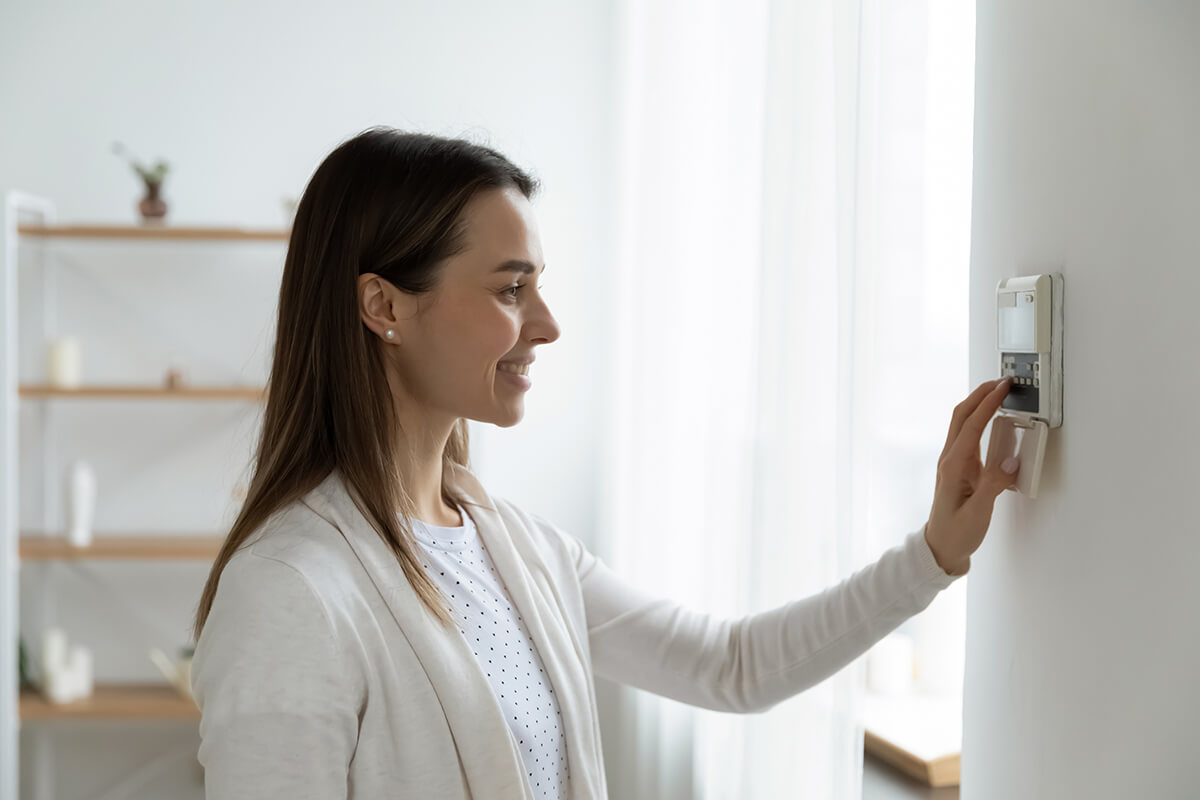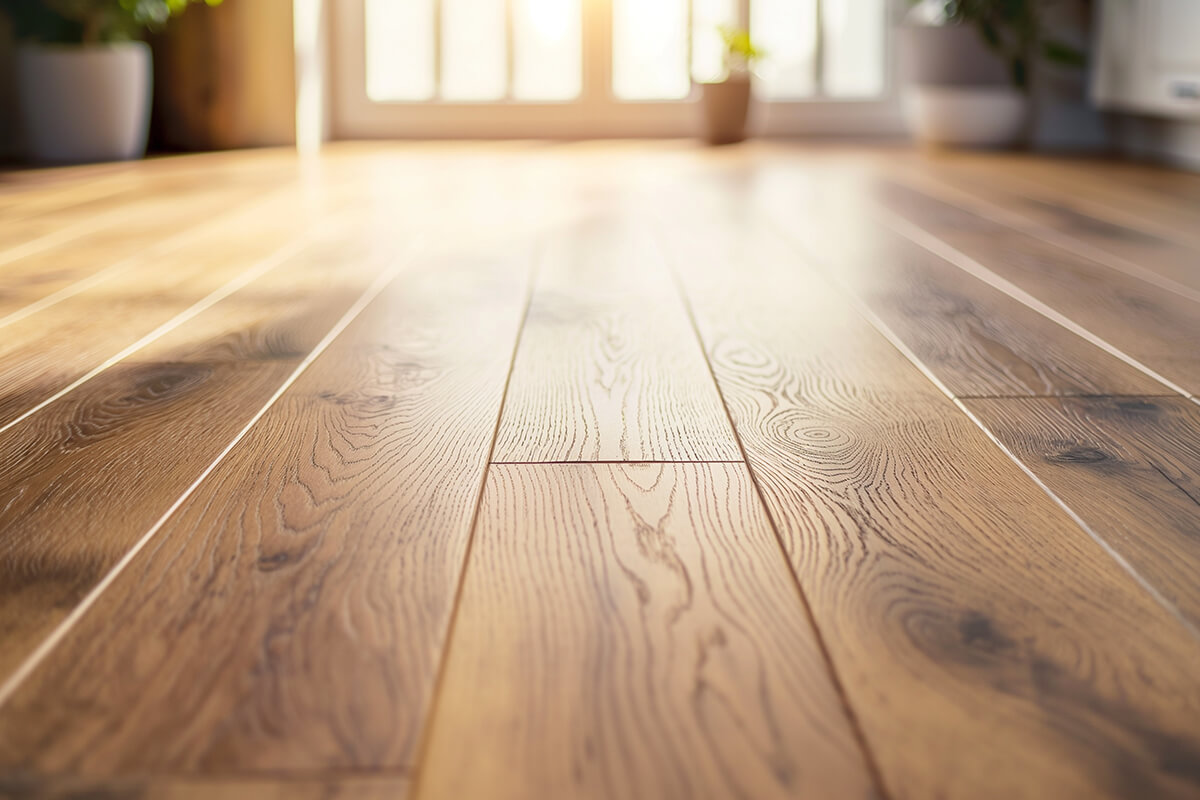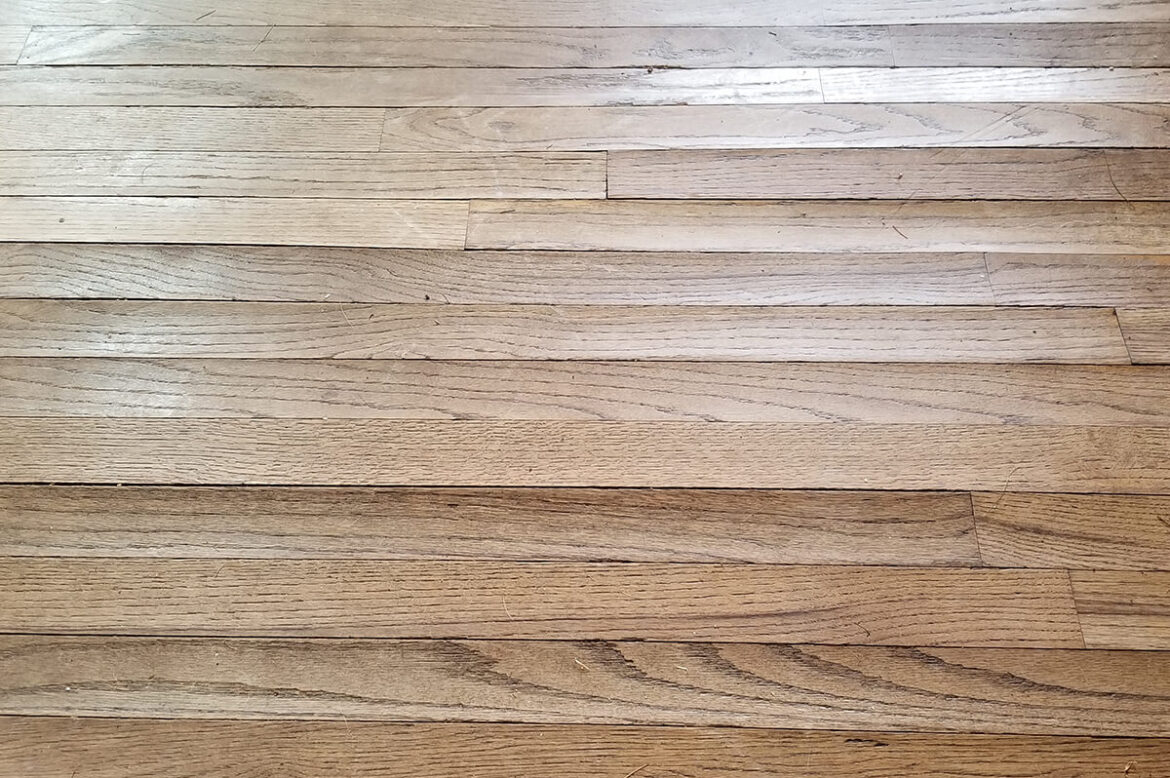The arrival of summer in Canada brings welcome warmth, but it also brings humidity, which is a silent and persistent threat to the beauty and structural integrity of your home’s wood flooring. As the air becomes thick and heavy, your hardwood can begin to change in subtle ways.
You might notice planks that are no longer perfectly flat, or feel slight ridges underfoot where none existed before. This is the “summer swell,” and if left unchecked, it can lead to permanent damage like cupping, crowning, or even buckling, compromising the investment you’ve made in your home’s character and value.
Understanding the Science: Why Humidity Affects Your Wood Flooring
At its core, wood is a natural, hygroscopic material, which means it behaves like a sponge, absorbing and releasing moisture from the air around it. Over dry winter months, wood releases moisture and contracts, which can lead to gaps between planks.
During humid summer months, it absorbs excess moisture from the air and expands. Since the planks are installed tightly against one another, this expansion creates immense pressure between the boards, forcing the wood to move in the only direction it can: up.
This movement manifests in several ways:
- Cupping: This is the most common sign of high humidity. The edges of a plank absorb moisture faster than the centre, causing them to swell and rise higher than the middle of the board, creating a concave “cup” shape.
- Crowning: The opposite of cupping, crowning is when the centre of the plank is higher than its edges. This often happens if a cupped floor is sanded flat before it has had a chance to dry out and return to its normal shape.
- Buckling: This is the most extreme form of damage, where the flooring expands so much that it lifts completely off the subfloor, sometimes by several inches. Buckling typically requires professional repair and replacement.
Your First Line of Defence: Practical Steps for Humidity Control

Managing your home’s indoor environment is the most effective way to protect your wood floors from the summer swell. The goal is to maintain a stable indoor humidity level, ideally between 35% and 55%.
- Monitor Your Indoor Climate: The first step is awareness. Purchase an inexpensive digital hygrometer (a device that measures humidity) to get an accurate reading of your home’s relative humidity (RH). This allows you to stop guessing and start taking informed action when levels consistently exceed the ideal range.
- Leverage Your Air Conditioning: Your air conditioner is your primary tool for dehumidification. As it cools the air, it naturally removes a significant amount of moisture. Running it consistently during humid spells is crucial not just for comfort, but for the health of your floors.
- Employ a Dehumidifier: In particularly humid regions or in below-grade spaces like basements, an air conditioner alone may not be enough. A dedicated dehumidifier can be set to maintain a specific RH level, providing targeted and powerful moisture removal.
- Ventilate Properly: Ensure that moisture-producing activities don’t add to the problem. Always use the exhaust fans in your kitchen when cooking and in your bathrooms when showering to vent humid air directly outside. Double-check that your clothes dryer vent is clean and securely ducted to the exterior of your home.
Long-Term Protection and Material Choices

While active management is important, long-term protection begins with the flooring system itself. A professionally applied, high-quality finish creates a barrier that slows the rate of moisture absorption. Similarly, a proper moisture barrier installed over the subfloor is critical.
These protective measures are fundamental to a floor’s longevity. In fact, according to a study, an estimated service life of 44 years is obtained for indoor wood flooring systems, with protection type, wood type, and floor type significantly influencing their durability and sustainability (Silva et al., 2021).
Choosing a Floor Built to Resist Humidity
The type of wood flooring also plays a role. Engineered hardwood, constructed with a core of layered plywood, is inherently more dimensionally stable than solid hardwood. It is less prone to expanding and contracting with humidity shifts.
This stability is a key reason why it’s a popular choice for homeowners managing the humid summers typical for hardwood in Toronto and other cities in Southern Ontario.
The Role of Professional Assessment
While your own monitoring and control efforts are vital, it’s important to recognize when a professional eye is needed. If you notice significant cupping or any signs of buckling, it’s time to call a flooring expert.
They can accurately assess the situation, determine if the cause is ambient humidity or a more serious issue like a hidden leak, and recommend the correct course of action. Attempting to fix a buckled floor without professional knowledge can lead to further damage.
The Best Defence is a Better Foundation
Protecting your wood floors from seasonal humidity is a crucial part of home maintenance. However, the most effective strategy begins before the floor is even installed. Choosing a high-quality flooring product that is well-suited to the Canadian climate provides a foundation of stability that makes seasonal management far easier.
Whether it’s a durable solid hardwood with a premium finish or a dimensionally stable engineered plank, the right product is your best defence.
For expert guidance on selecting the ideal wood flooring in Toronto for your home, connect with the specialists at Capital Hardwood Flooring at (416) 536-2200. A beautiful, stable floor that can handle every season starts with making the right choice today.
